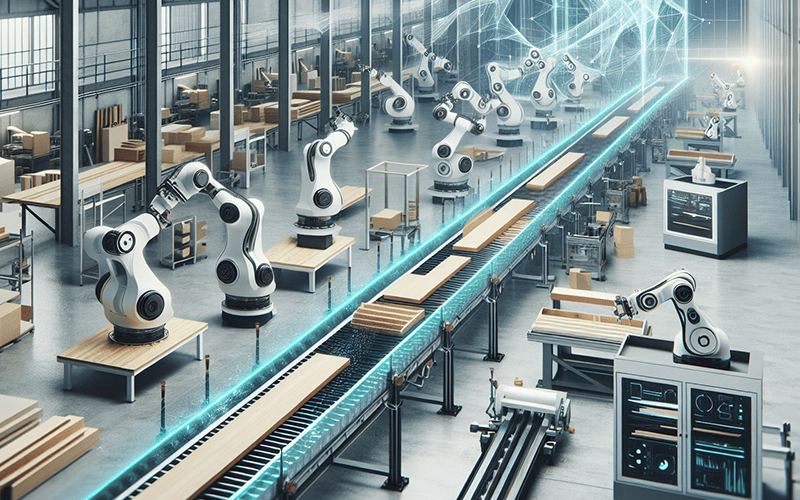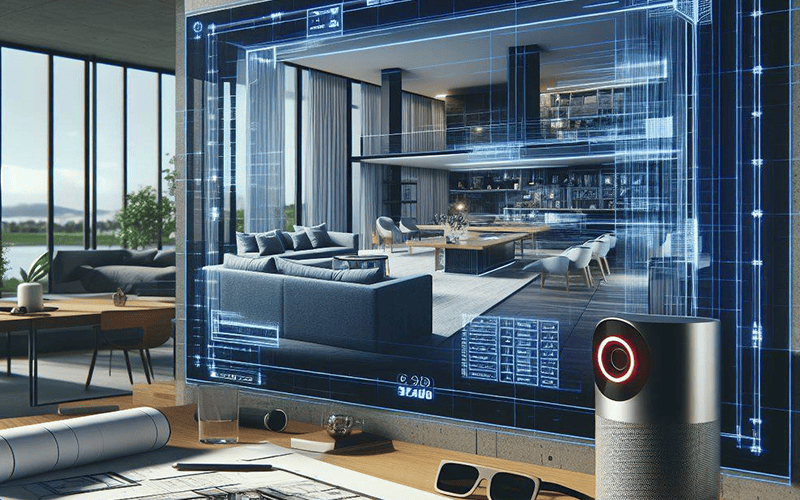I. Development Trends in the Furniture Industry
With the continuous advancement of technology, the global furniture industry is undergoing a
profound transformation. From design and manufacturing to sales and after-sales services, the
furniture industry is increasingly integrating modern technological elements. The development trends
in the furniture industry in the future can be summarized in the following aspects:

Personalization and Customization: The growing demand for personalized furniture
is driving the
rise of custom-made furniture. With the innovation of production technologies, manufacturers can
offer more diverse and personalized design solutions. Consumers can not only choose the size, color,
and materials based on their needs but also customize functions and layouts, meeting modern people’s
unique requirements for living spaces.
Environmental Protection and Sustainability: The global focus on environmental
protection and
sustainability is pushing the furniture industry to adopt eco-friendly materials and green
manufacturing processes. For example, more companies are starting to use recycled wood,
biodegradable materials, and non-toxic paints. This trend not only complies with environmental
regulations but also meets consumers' green consumption needs.
Smart and Connected Furniture: The
rapid development of smart home technologies is driving the smart transformation of furniture. Smart
furniture can be connected to other home devices via the internet to enhance the living experience.
In the future, furniture will not only have basic functionality but will also integrate more
intelligent technologies to meet higher-level user demands.
II. The Development of Smart Homes
Smart homes are a core component of the future furniture industry. They connect various smart
devices in the home through the internet to improve comfort, safety, and convenience. The
development trends of smart homes include:

Automation and Remote Control: With a smart home system, users can remotely
control various devices in their home, such as lighting, temperature control, and security systems.
For example, a smart lighting system can automatically adjust the light intensity based on people's
activities, while a smart air conditioner can automatically adjust based on the room temperature,
enhancing comfort.
Voice Control and Artificial Intelligence: Voice assistants like Amazon Alexa and
Google Assistant have already become the control center for smart homes. Users can control home
appliances via voice commands, making home management more convenient. With the continuous
advancement of artificial intelligence, smart home systems will become increasingly intelligent,
able to automatically adjust the living environment based on users' habits.
Integration and Connectivity: Future smart homes will achieve a high level of
integration and connectivity between different devices and systems. Through a unified smart
platform, users will be able to manage all their smart devices in one place, breaking down barriers
between brands and devices and enabling seamless connections.
III. The Impact and Significance of Artificial Intelligence on the Furniture Industry and
Smart Homes
The rapid development of artificial intelligence (AI) has a profound impact on both the furniture
industry and smart homes, manifested in the following ways:

Product Design and Innovation: AI can analyze large amounts of data to help
designers quickly understand market demands and consumer preferences, thereby improving the quality
of product designs. For instance, AI algorithms can predict future design trends, helping
manufacturers create products that align with consumer needs. Additionally, AI can simulate designs
in virtual spaces, optimizing both the aesthetics and functionality of products.
Smart Manufacturing: The application of AI in manufacturing processes can increase
the efficiency and accuracy of furniture production. For example, AI can automate operations on
production lines, detect quality issues in raw materials, reduce human errors, and optimize
production processes. Furthermore, smart manufacturing can reduce waste, improve resource
utilization, and drive environmental sustainability.
Enhancing User Experience: AI can help tailor home furnishings to users' behavior
and preferences, offering more personalized solutions. Smart furniture can not only adjust
temperature and lighting automatically but also fine-tune itself according to users' lifestyles. For
example, smart mattresses can automatically adjust firmness based on users' sleep conditions, while
smart sofas can adjust angles based on sitting posture, enhancing comfort.
After-Sales Service and Smart Customer Support: The use of AI technology in
after-sales services will also significantly improve consumer experiences. For example, AI-powered
customer support systems can provide instant assistance 24/7, helping users resolve any issues they
encounter with their furniture. AI can also predict the maintenance needs of furniture products,
alerting consumers to perform necessary upkeep or replace parts in advance, thereby extending the
lifespan of their furniture.
IV. How to Leverage Artificial Intelligence to Develop the Furniture Industry
To fully leverage AI in driving the development of the furniture industry, companies need to
innovate and optimize in several areas:

Data-Driven Design and Production: Furniture companies should utilize big data and
AI technology to analyze consumer behavior, market trends, and competitor product performance,
accurately predicting market demand and optimizing design solutions. Additionally, AI can help
achieve smart manufacturing, improving efficiency and product quality.
Enhancing Smart Furniture Features: Furniture companies can collaborate with smart
home platforms to deeply integrate AI technologies into their products, creating more smart
furniture with enhanced features. For example, smart sofas, smart chairs, and smart beds—these
products not only improve living comfort but also enhance the interoperability of home systems,
offering smarter living experiences.
Personalized Customization and Virtual Display: AI technology can help furniture
companies offer more personalized customization services. Through AI-driven Virtual Reality (VR) and
Augmented Reality (AR), consumers can preview how furniture will look in their homes before making a
purchase, aiding decision-making. This immersive shopping experience will attract more consumers.
Smart Marketing and Customer Service: By utilizing AI to analyze consumer shopping
behavior and needs, furniture companies can implement more precise marketing strategies.
Additionally, AI can help build intelligent customer service systems, providing 24/7 online support,
which increases customer satisfaction and loyalty.
The integration of artificial intelligence with the furniture industry will usher in a new
era. Through smart, personalized, and automated technological innovations, the furniture
industry can enhance product design and production efficiency, as well as create more
comfortable and convenient living environments. As AI technology continues to advance, the
future of furniture will not just be functional items in living spaces but will become a core
part of the intelligent lifestyle.



